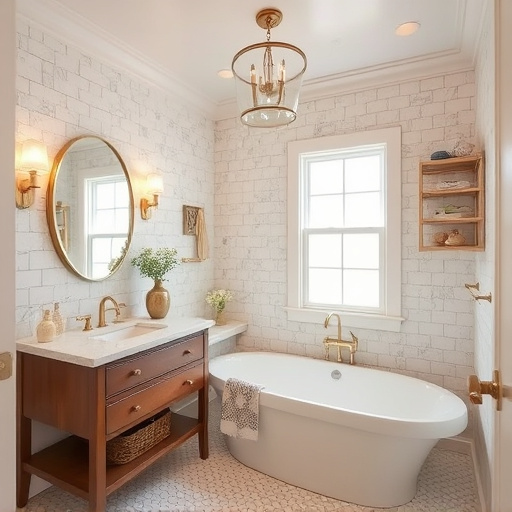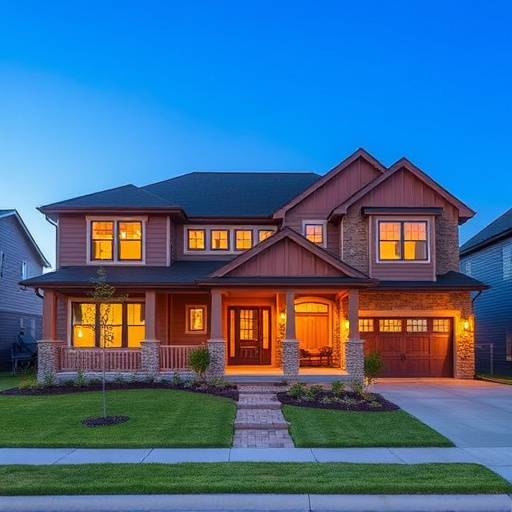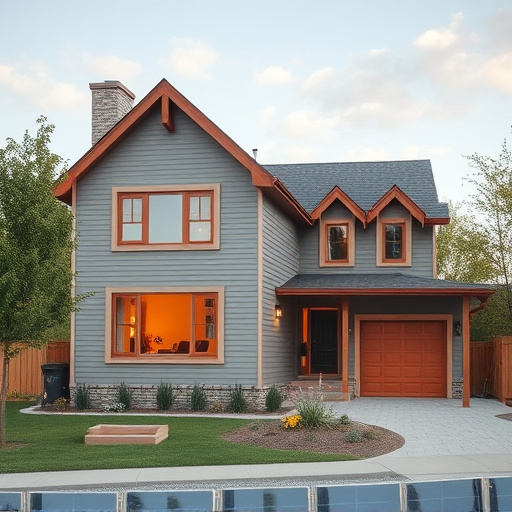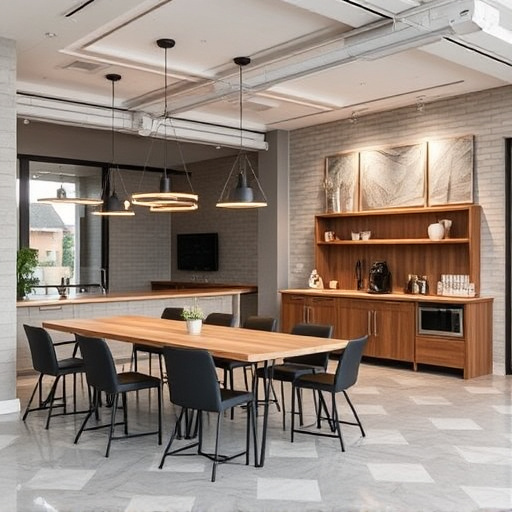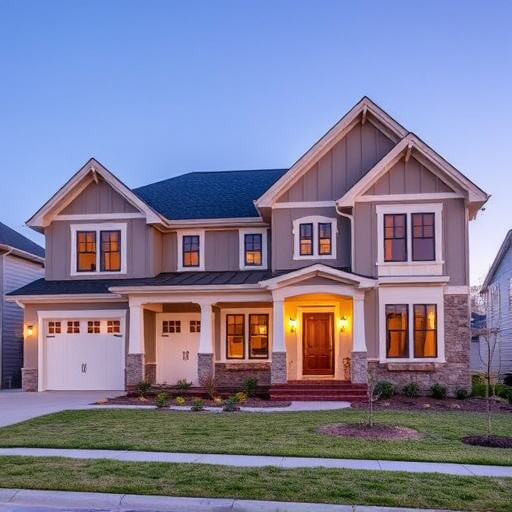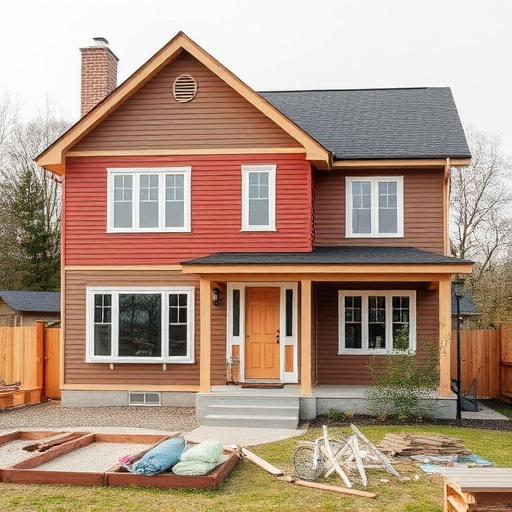When comparing urban and rural settings for custom home construction, urban dwellers prioritize modern amenities, efficient space utilization, and smart home technologies, while rural residents value expansive outdoor living spaces, rustic traditional designs, and natural lighting. Urban builders focus on compact, aesthetically pleasing homes that meet strict regulations, whereas rural builders enjoy more freedom in creative design and less stringent building codes. Both environments demand tailored approaches: urban areas require curb appeal and contemporary design, while rural areas necessitate functional upgrades and environmental stewardship to preserve tranquil ambiance.
“Unveiling the Art of Custom Home Building: Urban vs Rural Perspectives explores the unique challenges and opportunities in designing and constructing homes tailored to urban and rural settings. From space-saving lofts in bustling cities to expansive estates in serene countryside, this article delves into distinct architectural styles, structural considerations, and sustainability practices.
Discover how local regulations, community expectations, and individual preferences shape custom home construction, ultimately creating havens that embrace urban convenience or rural tranquility.”
- Understanding Urban and Rural Custom Home Building Needs
- – Exploring the distinct differences in home design preferences and requirements between urban and rural residents.
- – Discussing factors like space constraints, community expectations, and local regulations.
Understanding Urban and Rural Custom Home Building Needs
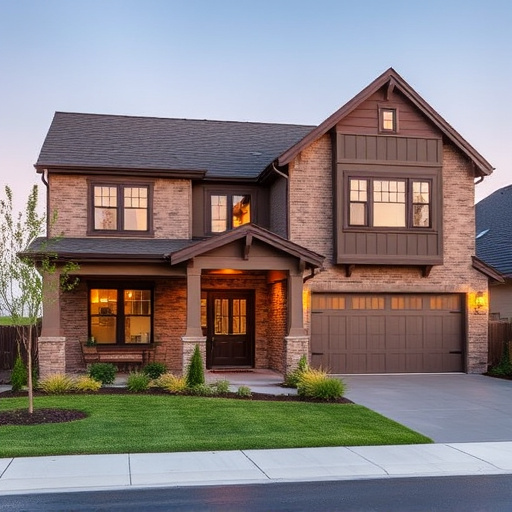
When considering custom homes in urban versus rural settings, it’s crucial to understand how the environment and lifestyle preferences shape building needs. In urban areas, custom home builders often face the challenge of maximizing limited space while incorporating modern amenities and designs that cater to fast-paced city living. This might involve creating multifunctional spaces, efficient layouts, and integrating smart home technology to enhance urban dwellers’ experiences. On the other hand, rural custom home construction focuses on adapting to vast open spaces, natural landscapes, and unique architectural styles that blend seamlessly with the environment.
In terms of customization, both settings offer distinct opportunities. Urban clients may seek homes with distinctive exterior painting schemes, customized home renovations for specific lifestyles, or whole house remodels to suit their evolving needs. In contrast, rural homeowners might prefer rustic, traditional designs, incorporating local materials and embracing natural lighting and ventilation. Understanding these nuances ensures that builders can tailor their services to meet the unique demands of each setting, creating custom homes that truly reflect the character of their surroundings.
– Exploring the distinct differences in home design preferences and requirements between urban and rural residents.
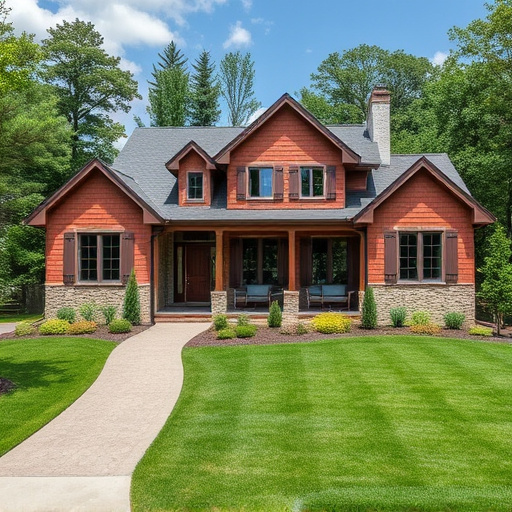
When comparing urban and rural residents’ preferences for custom homes, it’s striking to see how vastly different their needs and design aspirations can be. Urban dwellers often seek homes that blend seamlessly with the dense, structured environment, prioritizing efficient space utilization, modern aesthetics, and easy access to amenities. These homes may feature sleek lines, open floor plans integrating living, dining, and kitchen areas, and smart home technologies for enhanced convenience. In contrast, rural residents might favor homes designed around outdoor living, offering ample natural light, expansive kitchens and baths that encourage entertaining and gathering, and customizable spaces tailored to their specific lifestyles—whether it’s a cozy nook for reading or a workshop for creative pursuits.
The disparities extend to the overall approach of home improvement services. Urban homeowners may opt for renovations that enhance curb appeal and property value, focusing on customized work that reflects contemporary design trends. Rural residents, however, might prioritize functionality and adaptability, investing in kitchen and bath upgrades that accommodate large families or multi-generational households. These distinct preferences shape not just the exterior and interior aesthetics but also the overall character of custom homes, reflecting the unique rhythms and priorities of urban and rural living.
– Discussing factors like space constraints, community expectations, and local regulations.
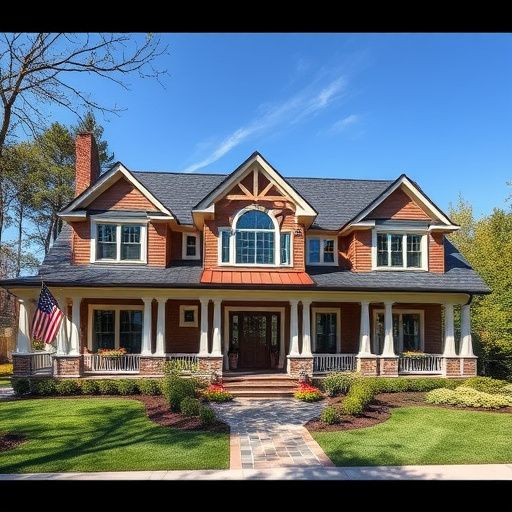
Building custom homes in urban settings presents unique challenges compared to rural locations. Space is a primary concern; lots are often smaller, leading to compact designs that must maximize every square foot. This may result in innovative layouts where functional spaces, like open concept living and clever storage solutions, become essential to creating a sense of spaciousness. Furthermore, community expectations play a significant role. Urban neighbors tend to value aesthetics and architectural harmony, influencing design choices and materials used to maintain a cohesive neighborhood look. Local regulations also strictly govern construction, with building codes and zoning laws that can impact the final product, from height restrictions to parking requirements.
In contrast, rural settings offer more freedom in terms of space and community expectations. Larger plots allow for more creative custom home designs, including multiple room remodels and unique floor plans that cater to specific needs or desires. While local regulations still exist, they are generally less stringent, providing builders and homeowners with greater flexibility. However, it’s crucial to consider the impact on the environment and surrounding natural landscapes when constructing in these areas to maintain the tranquil ambiance many rural residents cherish.
When building custom homes, whether in urban or rural settings, understanding the unique needs and preferences of each location is key. Urban dwellers often seek compact, efficient designs that cater to dense living, while rural residents may prefer expansive floor plans incorporating natural landscapes. Both environments come with their own regulatory and community considerations, requiring builders to adapt their approaches accordingly. By tailoring these custom homes to their respective settings, builders can create spaces that not only meet but exceed client expectations.








